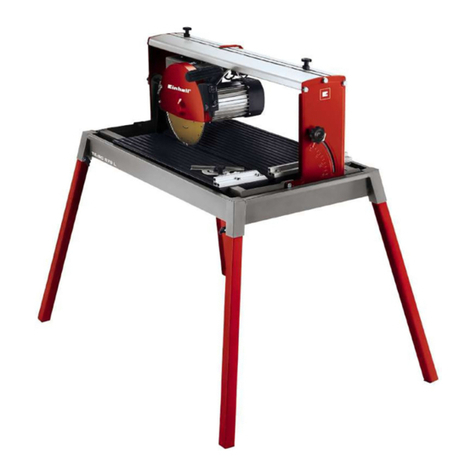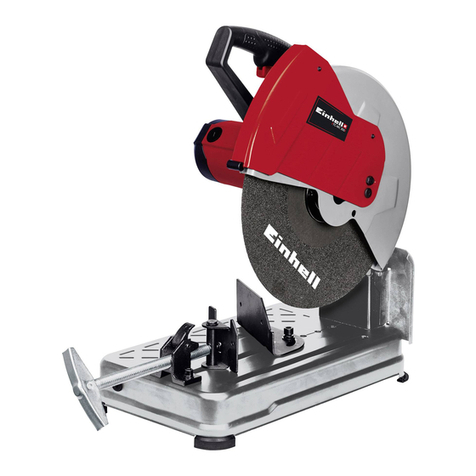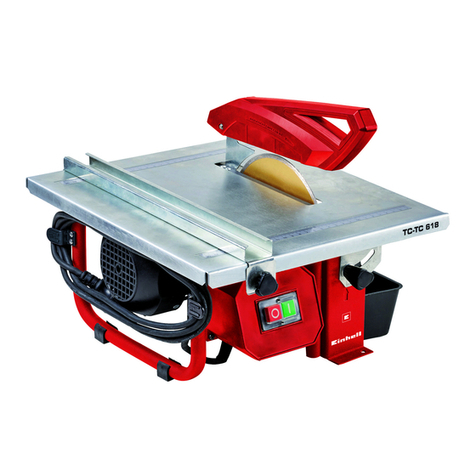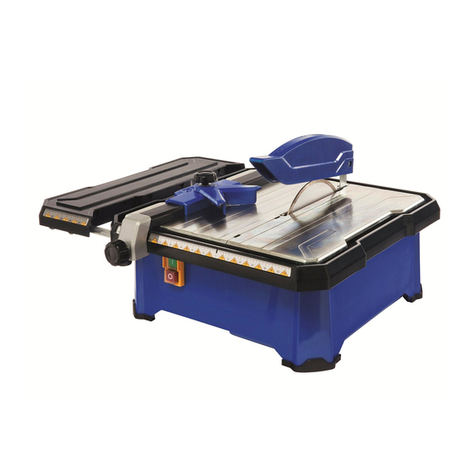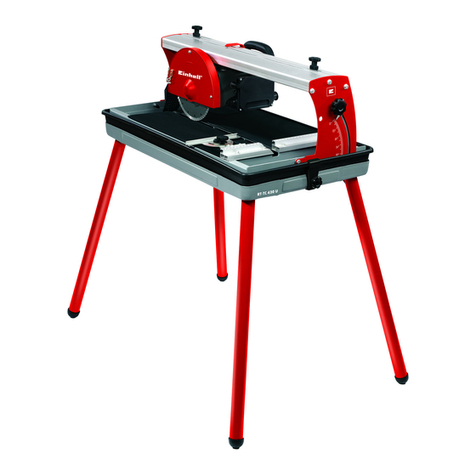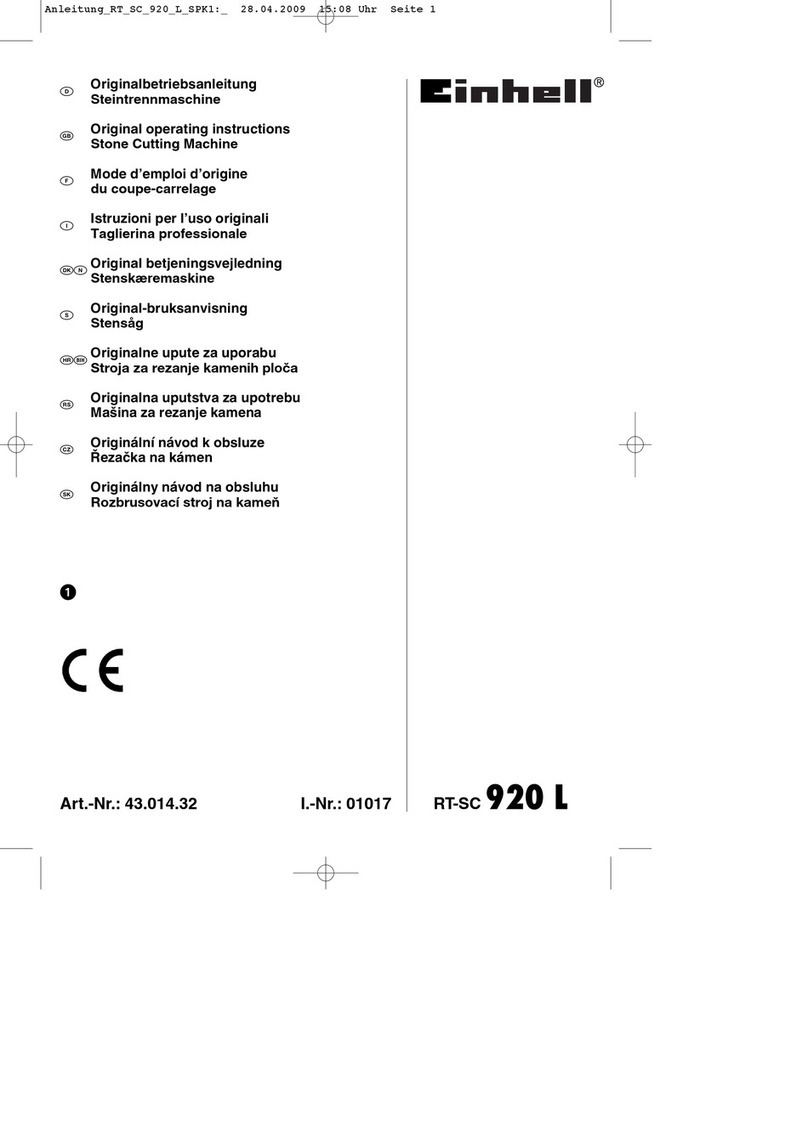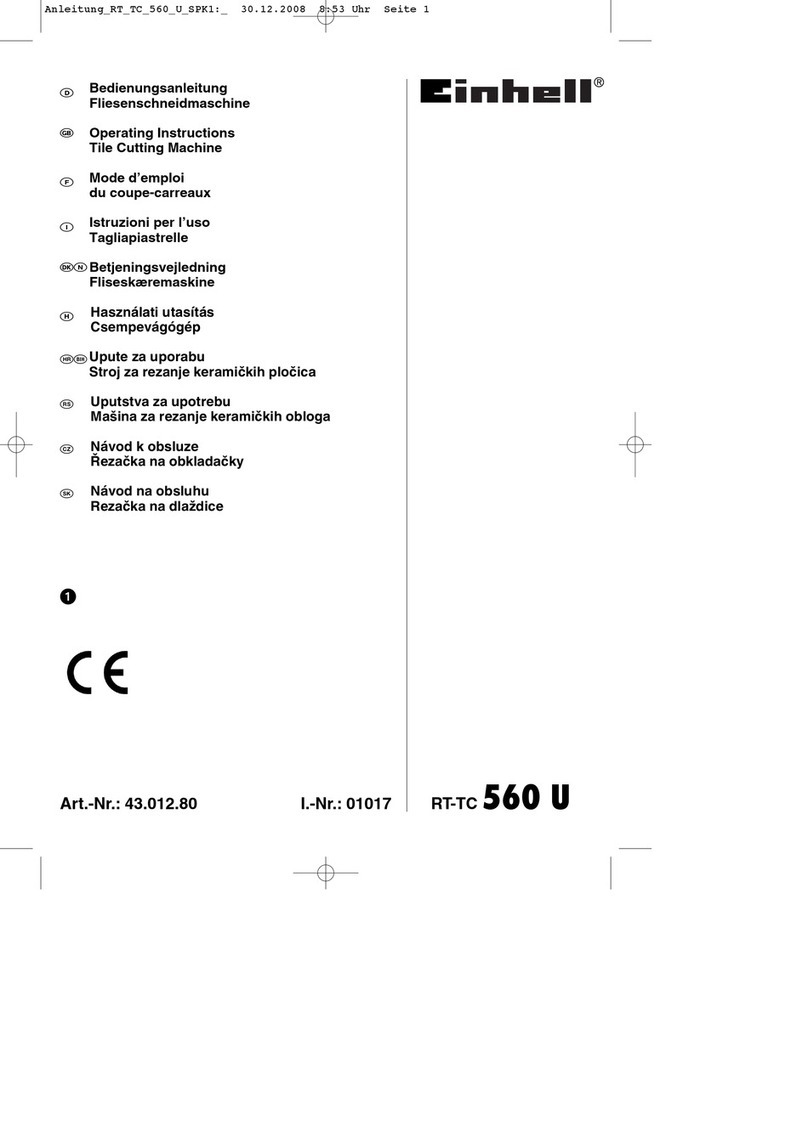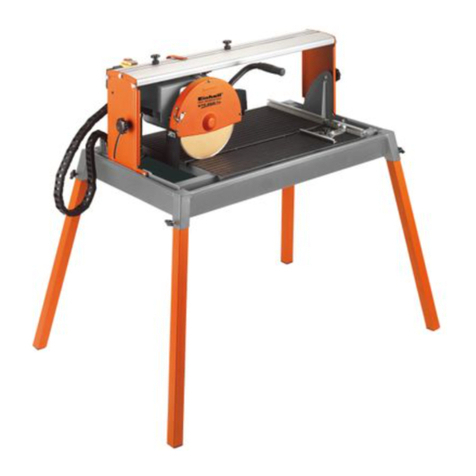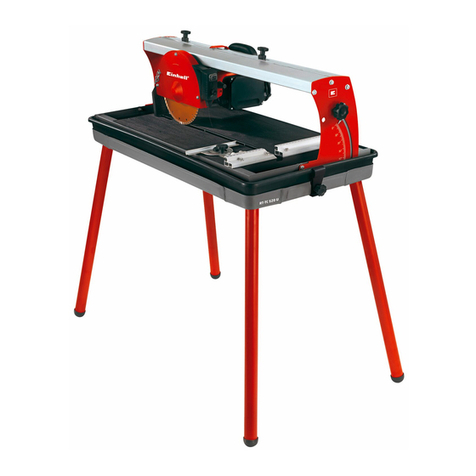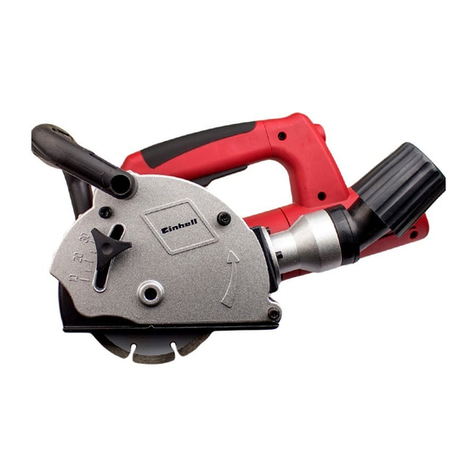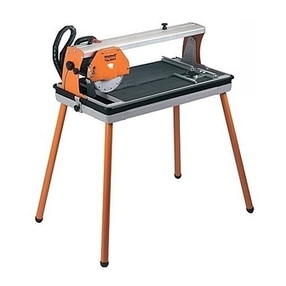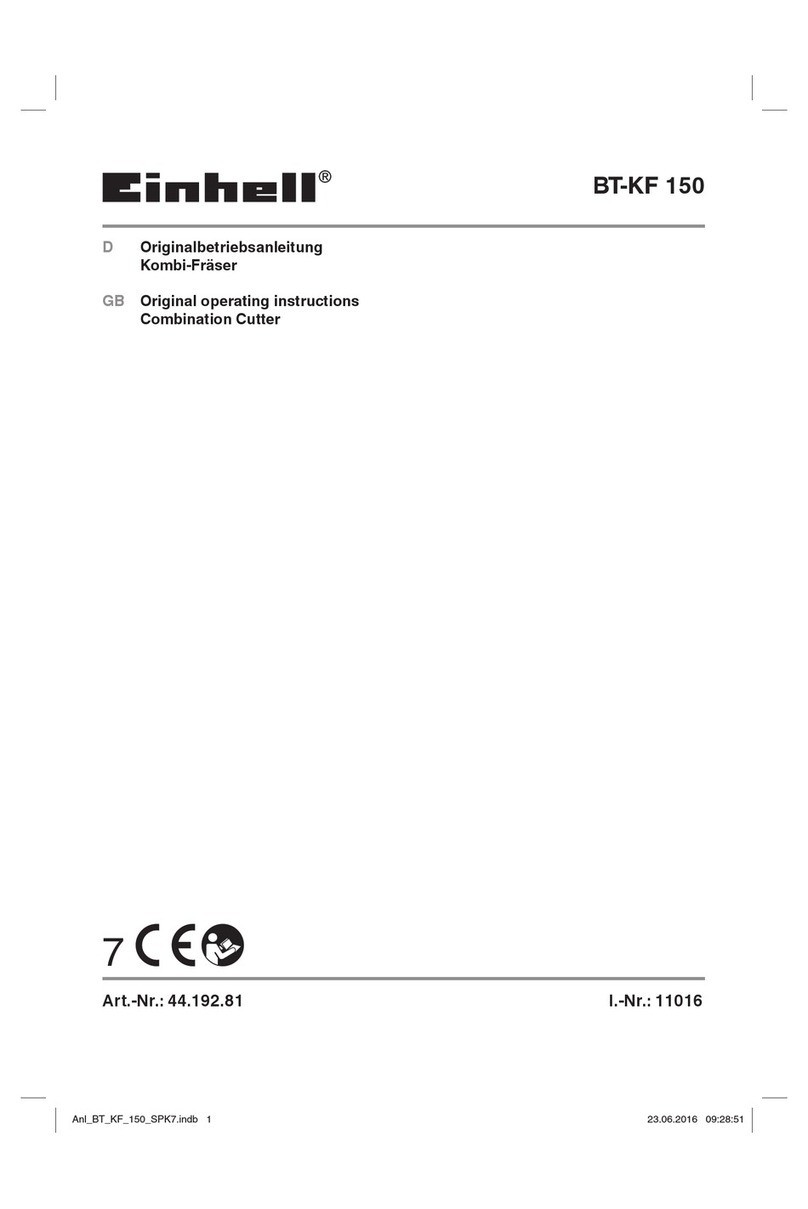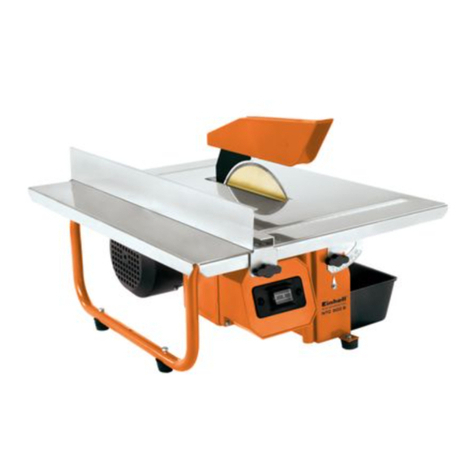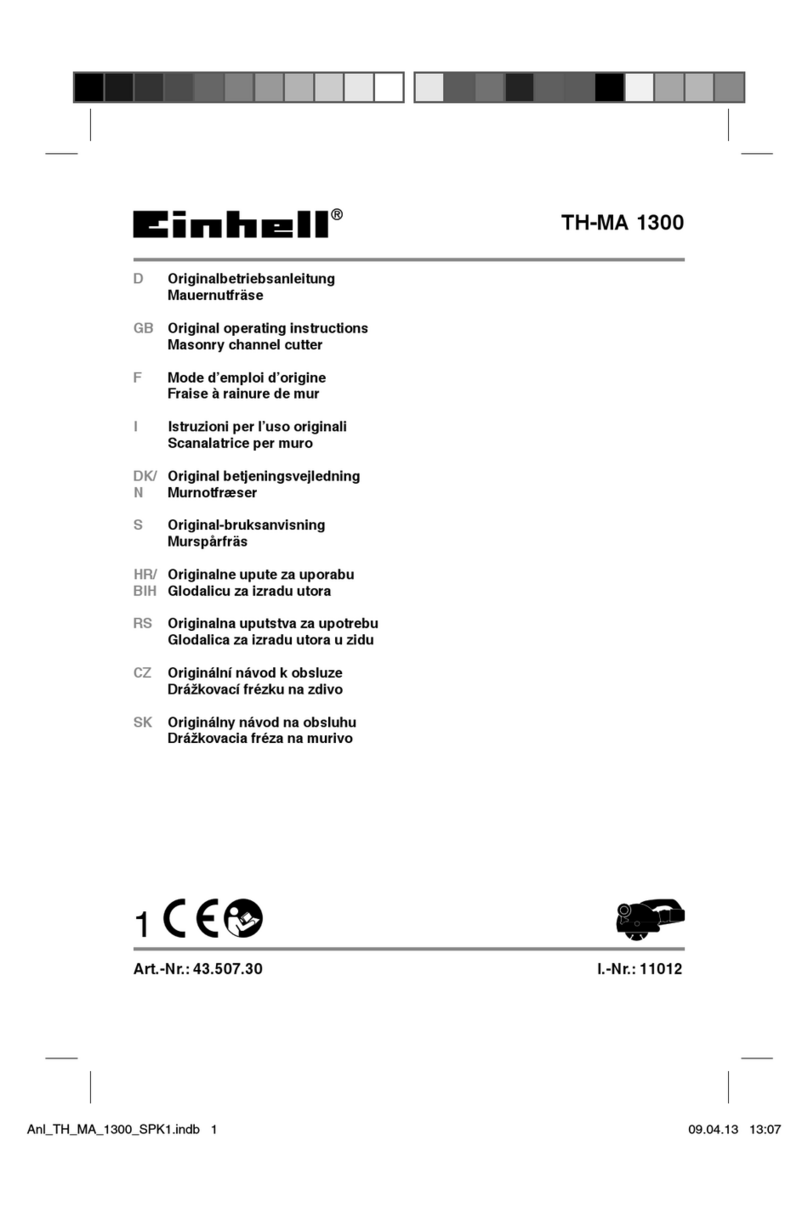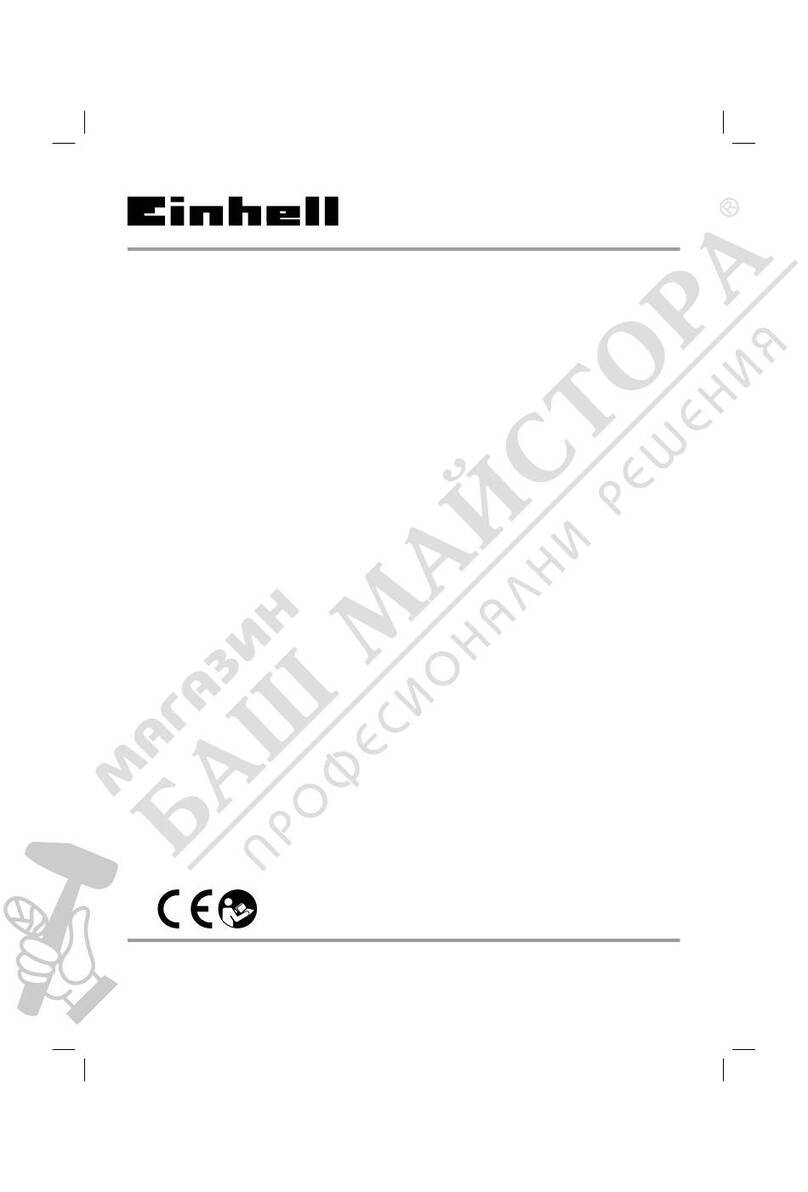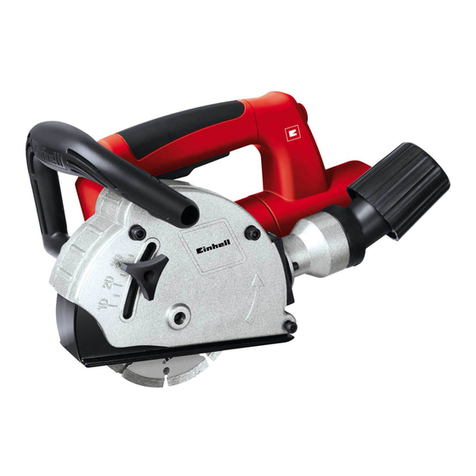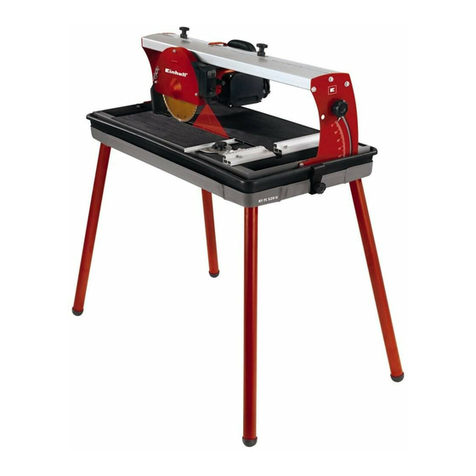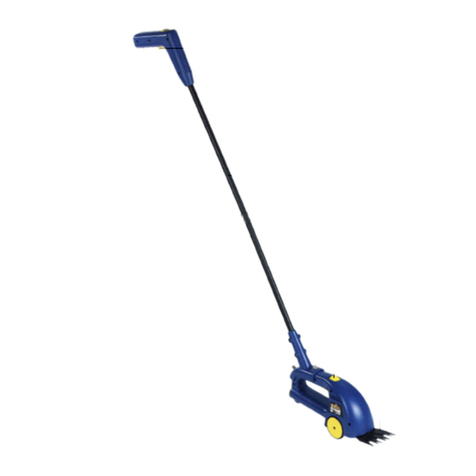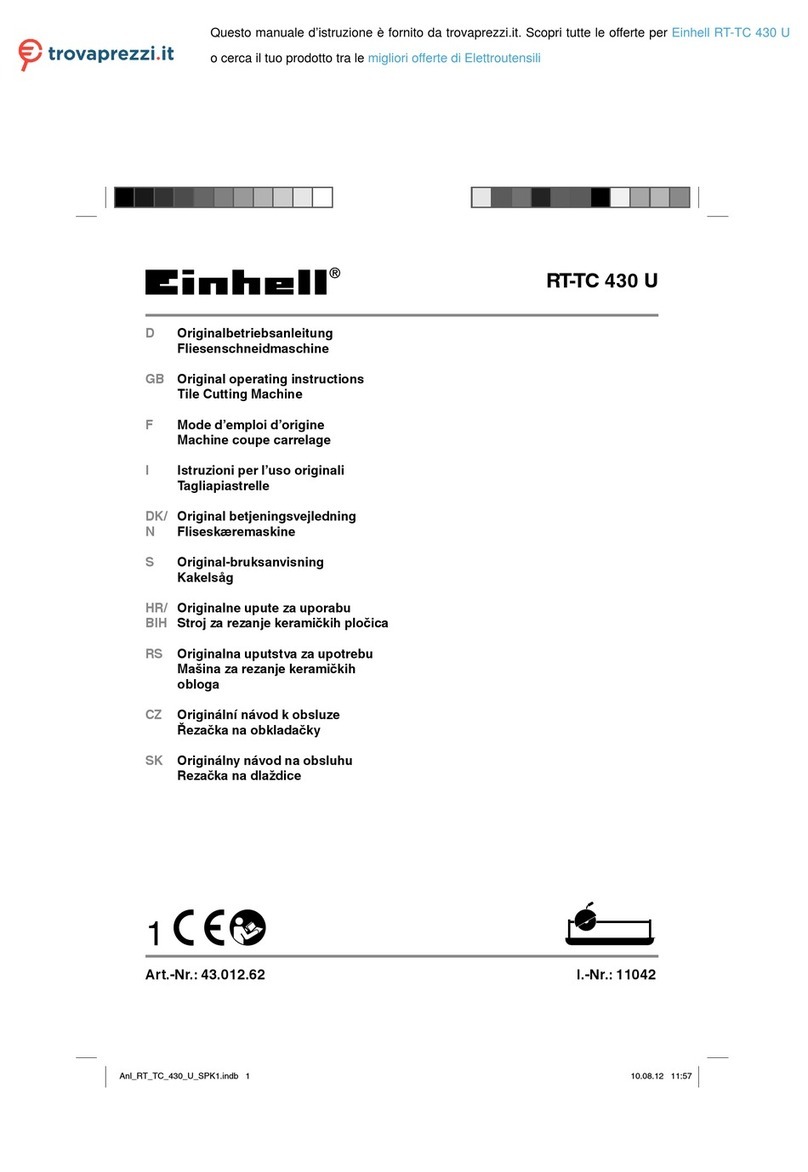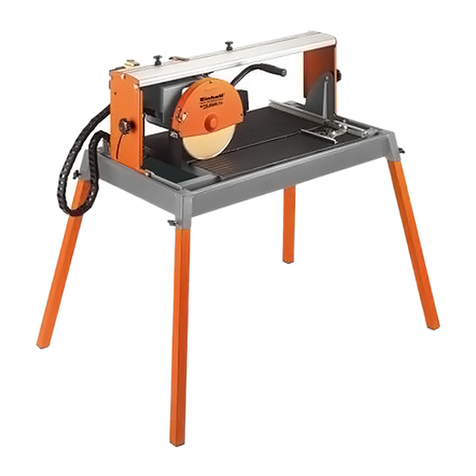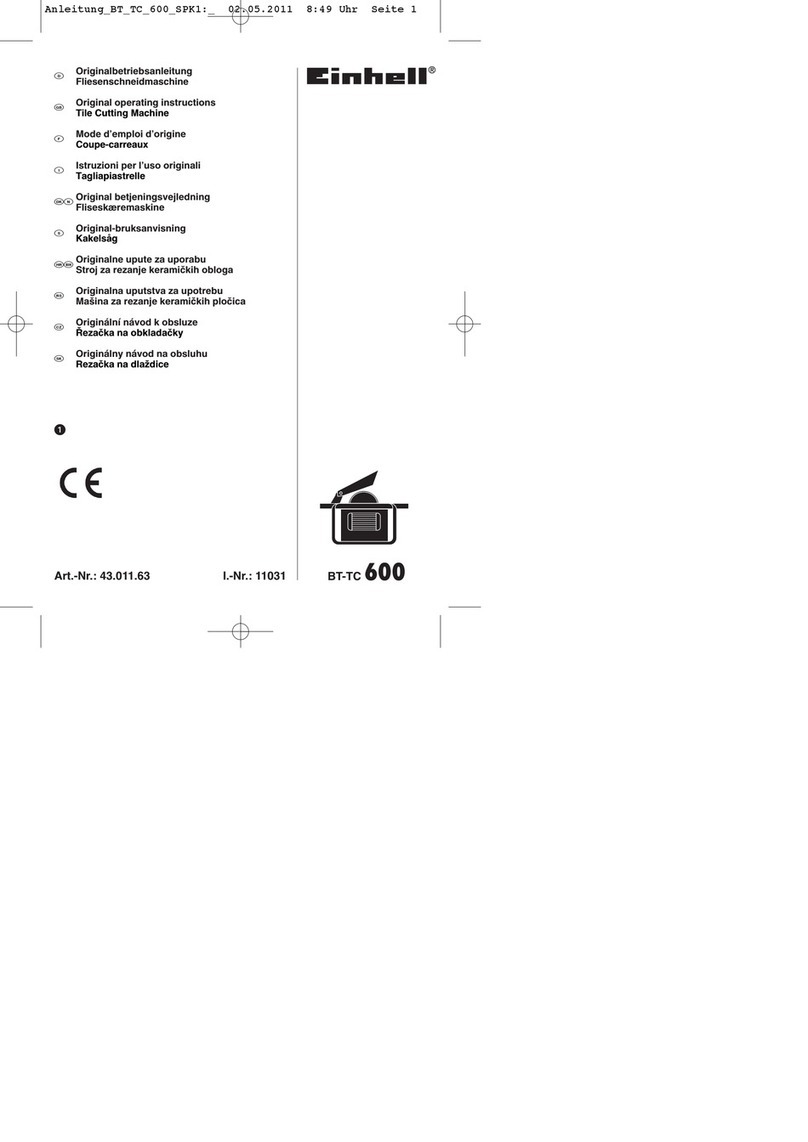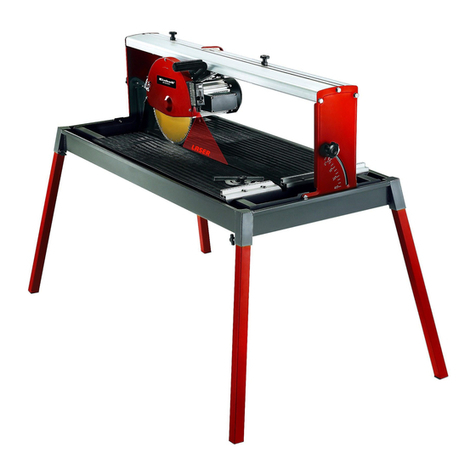9
Important: Before you lift the machine out of the
trough or transport it, the cutting unit must be
secured again with the star handle screw (11) and
spacer (40).
7.3 ON/OFF switch (Fig. 6)
앬To switch on, press the “1” on the ON/OFF
switch (16).
앬Before you begin cutting, wait until the cutting
wheel has reached maximum speed and the
cooling water pump (13) has started supplying
the cutting wheel with water.
앬To switch off, press the “0” on the switch (16).
앬Your machine is equipped with an overload
switch (16 a). If the machine is overloaded, the
overload switch (16 a) will trigger. After a cooling
down period, the machine can be reactivated by
pressing the overload switch (16 a).
7.4 90° Cutting (Fig. 7/8)
앬Loosen the star grip screw (27).
앬Set the angle stop (5) to 90° and retighten the
star grip screw (27).
앬Retighten the screws (28) to fasten the angle
stop (5).
앬Move the machine head (29) to the far end with
the handle (9).
앬Position the tile against the rail fence (6) on the
angle stop (5).
앬Switch on the tile cutting machine.
앬Caution: Always wait until the cooling water has
reached the cutting wheel (2) first.
앬Move the machine head (29) slowly and
smoothly forward through the tile with the handle
(9).
앬Switch off the tile cutting machine after
completion of cutting.
7.5 45° Diagonal cut (Fig. 9)
앬Set the angle stop (5) to 45°.
앬Cut as described in 7.4
7.6 45° Lengthwise cut, “jolly cut” (Fig.10)
앬Loosen the star grip screw (10).
앬Tilt the guide rail (7) to the left to 45° on the
angle scale (17).
앬Retighten the star grip screw (10).
앬Cut as described in 7.4.
7.7 Machining large workpieces (Fig. 11/12)
To enable you to machine large workpieces, the
cutting unit can be pivoted upwards. In this position
you can machine workpieces with a length of up to
570 mm (up to a max. workpiece thickness of 38
mm).
앬Remove the screw (37) on the top for this
purpose.
앬The cutting until will pivot upwards automatically.
앬You can now complete the required cuts as
described in sections 7.3 to 7.6. All that is
required is slight additional pressure downwards
on the handle.
7.8 Changing the diamond cutting wheel
(Fig. 13/14)
앬Pull out the power plug.
앬Unscrew the four screws (30) and remove the
safety hood (8) for the blade.
앬Place the wrench (31) on the motor shaft and
hold.
앬Using the wrench (34), loosen the flange nut in
the direction of rotation of the cutting wheel (2).
(Caution: Left-hand screw-thread.)
앬Remove the outer flange (35) and cutting wheel
(2).
앬Clean the mounting flange thoroughly before
fitting the new cutting wheel.
앬Fit the new cutting wheel by following the above
procedures in reverse and then tighten.
Caution: Pay attention to the direction of rotation
of the cutting wheel!
앬Mount the safety hood (8) for the blade again.
8. Operating the laser (Fig. 17-21)
8.1 Stationary operation (Fig. 17/18)
To switch on: Move the ON/OFF switch (46) to the
“I” position.
To switch off: Move the ON/OFF switch (46) to the
“0” position.
Switch on the laser (45). A laser line is projected
onto the material you wish to process, providing an
exact guide for the cut. You can additionally adjust
the laser with the screw (47). To do so, undo the
screw (47) by a few turns. The laser (45) can now be
moved and adjusted vertically and horizontally on the
adapter (48). Tighten screw (47) again when you are
satisfied with the adjustment.
8.2 Use as a laser level unit (Fig. 17-20)
Remove the screw (47). The laser (45) can now be
taken off the adapter (48) and used as an external
laser level unit. The laser (45) is equipped with two
spirit levels (49) and can therefore be adjusted both
horizontally and vertically. The base plate (50) of the
laser is magnetic, enabling it to be secured on
suitable surfaces.
See Figures 20 and 21 for two examples of use.
GB
